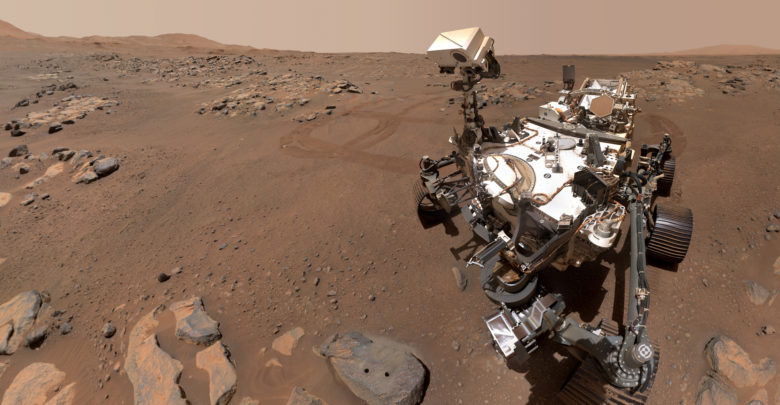 National Aeronautics and Space Administration
National Aeronautics and Space AdministrationApproximately 225 million kilometres away from Earth, the Perseverance rover — a National Aeronautics and Space Administration (NASA) rover mission — has been exploring rocks in the Jezero Crater on Mars since February 2021.
Perseverance is collecting rock samples and looking for signs of past microbial life on Mars. A separate mission will bring these rock samples to Earth for further analysis around 2033. In the meantime, Chris Herd, a University of Alberta professor in the department of earth and atmospheric sciences, is helping choose the samples that Perseverance collects.
Rover mission aims to collect 30 samples from rocks by 2027
The mission is aiming to collect 30 Martian rock samples by 2027, which will be brought to Earth around 2033.
Perseverance collects a sample by using a drill bit to drill into the rock. It collects a core that is roughly the size of a piece of chalk. The rover then seals the core into a sample tube, Herd explained.
“We’re looking for something that’s representative of the rock units in the area,” Herd said. “We also look for diversity — we don’t want a suite of samples that are all the same.”
When analyzing a rock, an abrasion bit scrapes the surface first. Then, different tools analyze the rock’s components, such as its minerals and organic matter if there is any. Researchers are prioritizing rocks with traces of organic matter when collecting samples.
“We can’t tell with the rover instruments whether that organic matter is from life, but it would be a strong hint that will be worth following up on,” Herd said.
Researchers are also prioritizing rocks that formed by water — also known as sedimentary rocks. This is because they “have the best chance of preserving evidence of ancient life,” such as organic matter and fossils, according to Herd.
“But as good as the rover instruments are, we can’t say for sure whether life was there. That’s why we will follow up on these observations at the surface by studying the samples once they come back to Earth.”
Researchers will capture rock variety with the samples, Herd says
Researchers will compare Martian meteorites that fell to Earth to the Martian rock samples. According to Herd, although there are around 200 Martian meteorites, they are all igneous rocks. Igneous rock forms after molten rock, such as lava, cools and solidifies.
The lack of sedimentary rocks is due to the process of meteorites falling to Earth, Herd explained. The process is “so violent that only the strong pieces will survive that trip.”
“We’ve already got sedimentary rocks and loose material in the sample suite that we’ve collected. We have nothing like that in Martian meteorites,” Herd said.
The igneous rock samples that Perseverance has collected will provide more information and context on Martian geology and the Martian meteorites.
“The vast majority of the Martian meteorites only formed in the last few 100 million years, whereas the rocks in the Jezero Crater are probably closer to 3 billion years old,” Herd said. “We can compare the age of the igneous rock that we would bring back to Martian meteorites.”
The igneous rock samples will also reveal more about the history and composition of igneous rocks on Mars and Earth.
“There’s a lot of variety of igneous rocks on Earth, and there’s a lot of variety of them on Mars. We will be able to capture all of that variety with the samples that we will have brought back,” Herd added.
Because of the gap in knowledge on sedimentary rocks, Perseverance is collecting many sedimentary rock samples for analysis.
“We’re [collecting] a lot of sedimentary rocks now — we’re well out of the igneous rock field. It’s quite exciting to be doing that now, and also looking forward to long-term planning about what samples we’re going to have in that group of 30 — which we hope to deliver to the spacecraft later this decade.”




